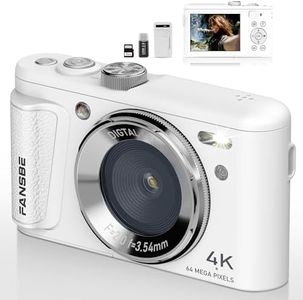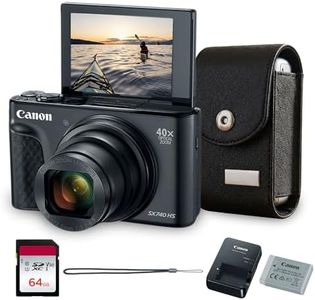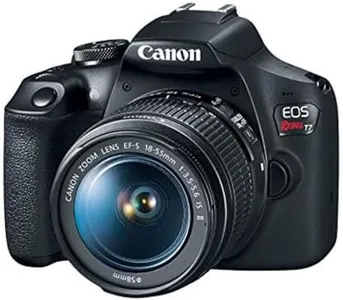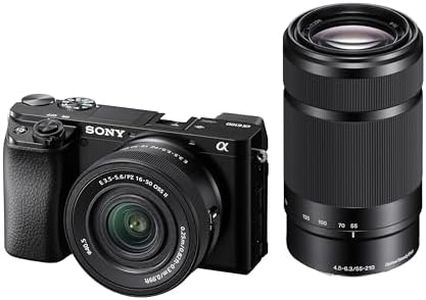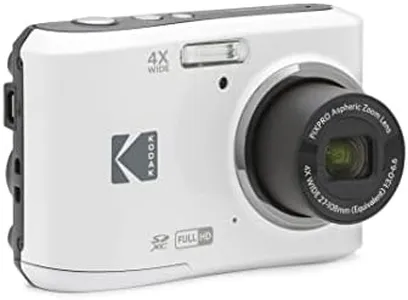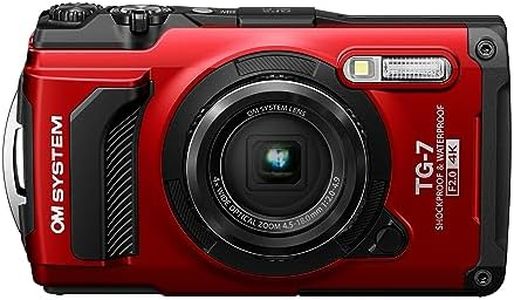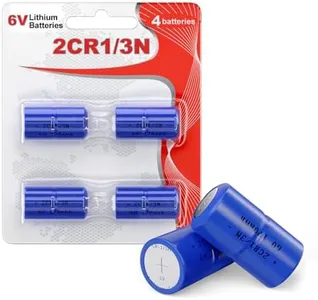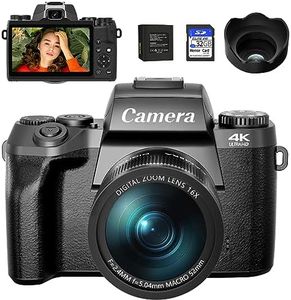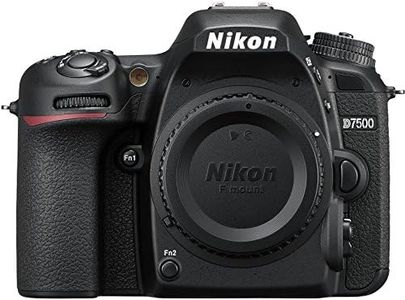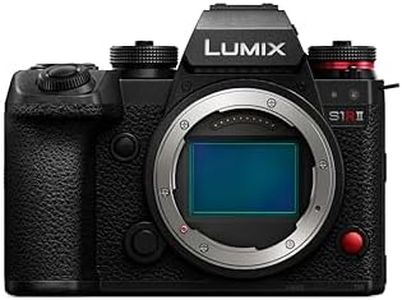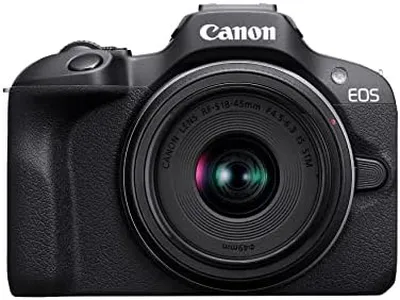10 Best Digital Camera For Wildlife Photography 2025 in the United States
Our technology thoroughly searches through the online shopping world, reviewing hundreds of sites. We then process and analyze this information, updating in real-time to bring you the latest top-rated products. This way, you always get the best and most current options available.

Our Top Picks
Winner
Canon PowerShot SX740 HS Digital Camera | 20.3MP CMOS Sensor, 40x Optical Zoom, 4K UHD Video, Wi-Fi & Bluetooth | Compact Point-and-Shoot Camera with Case and 64GB Card
Most important from
39 reviews
The Canon PowerShot SX740 HS is a compact and travel-friendly camera that stands out for its impressive 40x optical zoom, allowing you to get close-up shots of distant wildlife without carrying bulky lenses. Its 20.3MP sensor combined with Canon's DIGIC 8 processor produces vibrant, detailed photos with good color accuracy, which is helpful for capturing the subtle details of animals in various lighting conditions.
The camera offers 4K UHD video recording with built-in 5-axis optical image stabilization, so your wildlife videos will be smooth even if you're shooting handheld. However, this camera lacks advanced autofocus features and does not specify high frame rates, which are often important for capturing fast-moving animals sharply. It also does not have weather sealing, so it might not hold up well in rough outdoor conditions like rain or dust.
Battery life is average, and while Wi-Fi and Bluetooth make sharing images easy, serious wildlife photographers might find the point-and-shoot sensor size and autofocus system limiting compared to more advanced DSLRs or mirrorless cameras. This camera suits beginners or casual wildlife enthusiasts who want an all-in-one, lightweight option with strong zoom capabilities but do not require professional-level speed or ruggedness.
Most important from
39 reviews
Canon EOS Rebel T7 DSLR Camera with 18-55mm Lens | Built-in Wi-Fi | 24.1 MP CMOS Sensor | DIGIC 4+ Image Processor and Full HD Videos
The Canon EOS Rebel T7 is a beginner-friendly DSLR with a 24.1 MP APS-C sensor that captures detailed images suitable for wildlife shots. Its 9-point autofocus system performs adequately but may struggle with fast-moving animals compared to more advanced models offering more focus points and faster tracking. The camera shoots at around 3 frames per second, which is relatively slow for capturing quick wildlife action. It comes with an 18-55mm lens, good for closer subjects but somewhat limited for distant wildlife; however, it supports Canon EF and EF-S lenses, allowing upgrades to telephoto lenses better suited for wildlife photography.
The Rebel T7 includes optical image stabilization in compatible lenses, helping reduce blur from hand shake, which is useful in outdoor settings. It lacks weather sealing, so extra care is needed in harsh environments typical in wildlife photography. Battery life is average, sufficient for a day of shooting but may require spare batteries for extended trips. Built-in Wi-Fi and NFC make it easy to share photos quickly, although the frame rate and autofocus could limit capturing fast wildlife moments. This camera is a solid choice for beginners or hobbyists starting wildlife photography on a budget, especially if paired with a good telephoto lens, while serious wildlife photographers might find its speed and focus system somewhat limiting.
Sony Alpha a6100 w/ 16-50mm + 55-210mm
Most important from
256 reviews
The Sony Alpha a6100 is a solid choice for wildlife photography, especially if you're looking for a camera that combines speed and image quality in a compact mirrorless design. Its 24.2MP APS-C sensor delivers sharp, detailed photos, and it handles low light well with ISO up to 51,200. The autofocus system stands out with 425 points and real-time tracking, including eye detection, making it easier to keep fast-moving animals in focus. With a quick 0.02-second focus time and up to 11 frames per second shooting, you can capture action shots smoothly.
The included 16-50mm and 55-210mm lenses cover a decent zoom range (up to 210mm), which is helpful for distant wildlife, though some may find the aperture a bit limited in very low light. Image stabilization in the lenses helps reduce blur from hand shake, which is useful when shooting handheld outdoors. However, the camera lacks extensive weather sealing, so it might need extra care in harsh conditions. Battery life is average for this class, meaning you might want to carry spares for long shooting sessions in the wild.
The 3-inch tiltable touchscreen and 4K video capability add versatility for both stills and videos. The Sony a6100 provides a user-friendly experience with strong autofocus and image quality, making it a good fit for beginner to intermediate wildlife photographers who want a lightweight setup without sacrificing performance.
Most important from
256 reviews
Buying Guide for the Best Digital Camera For Wildlife Photography
Choosing the right digital camera for wildlife photography can be a game-changer in capturing those perfect moments in nature. Wildlife photography often involves fast-moving subjects, varying light conditions, and the need for high-quality images. Therefore, it's essential to understand the key specifications that will help you make an informed decision. Here are the most important specs to consider and how to navigate them to find the best fit for your needs.FAQ
Most Popular Categories Right Now
